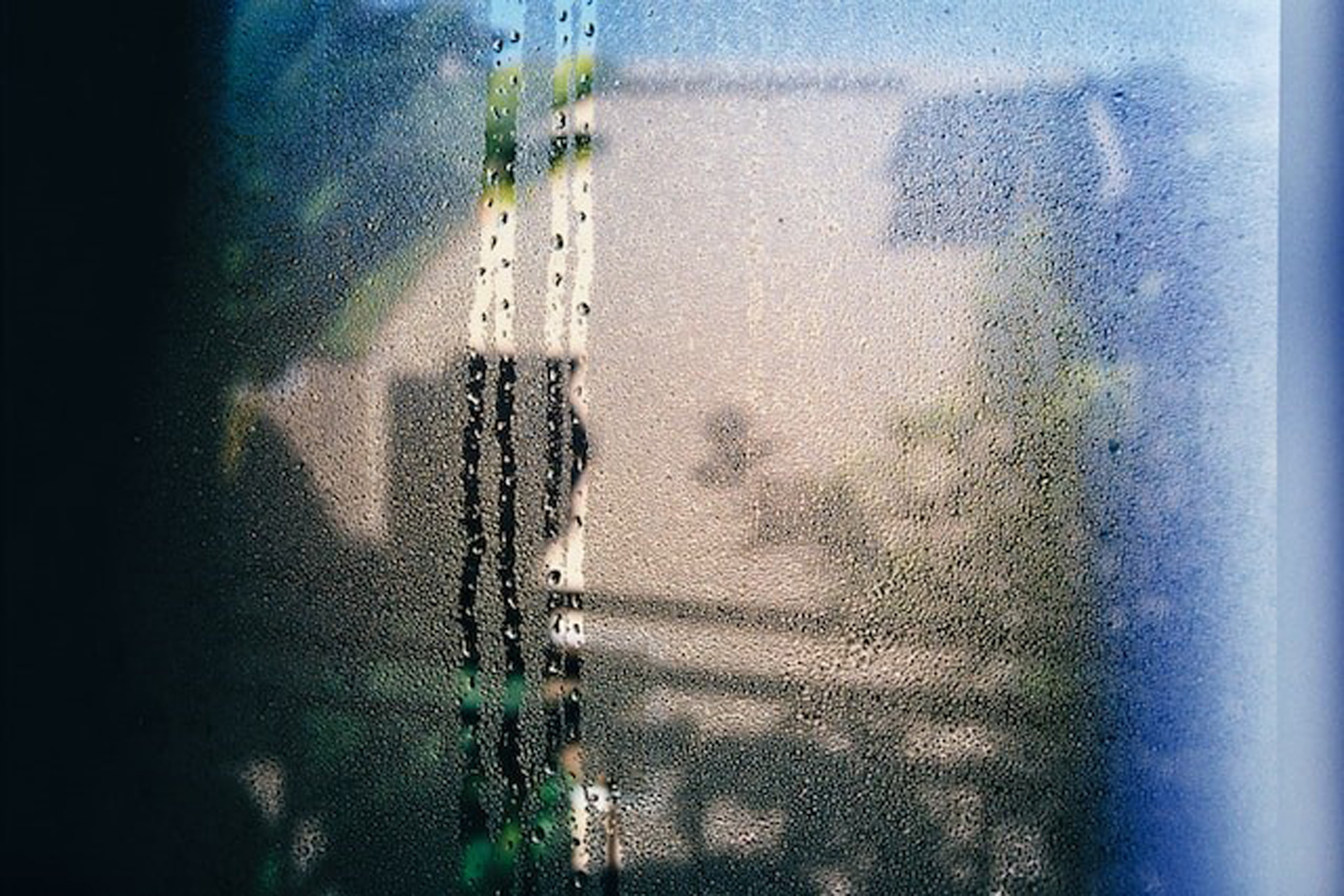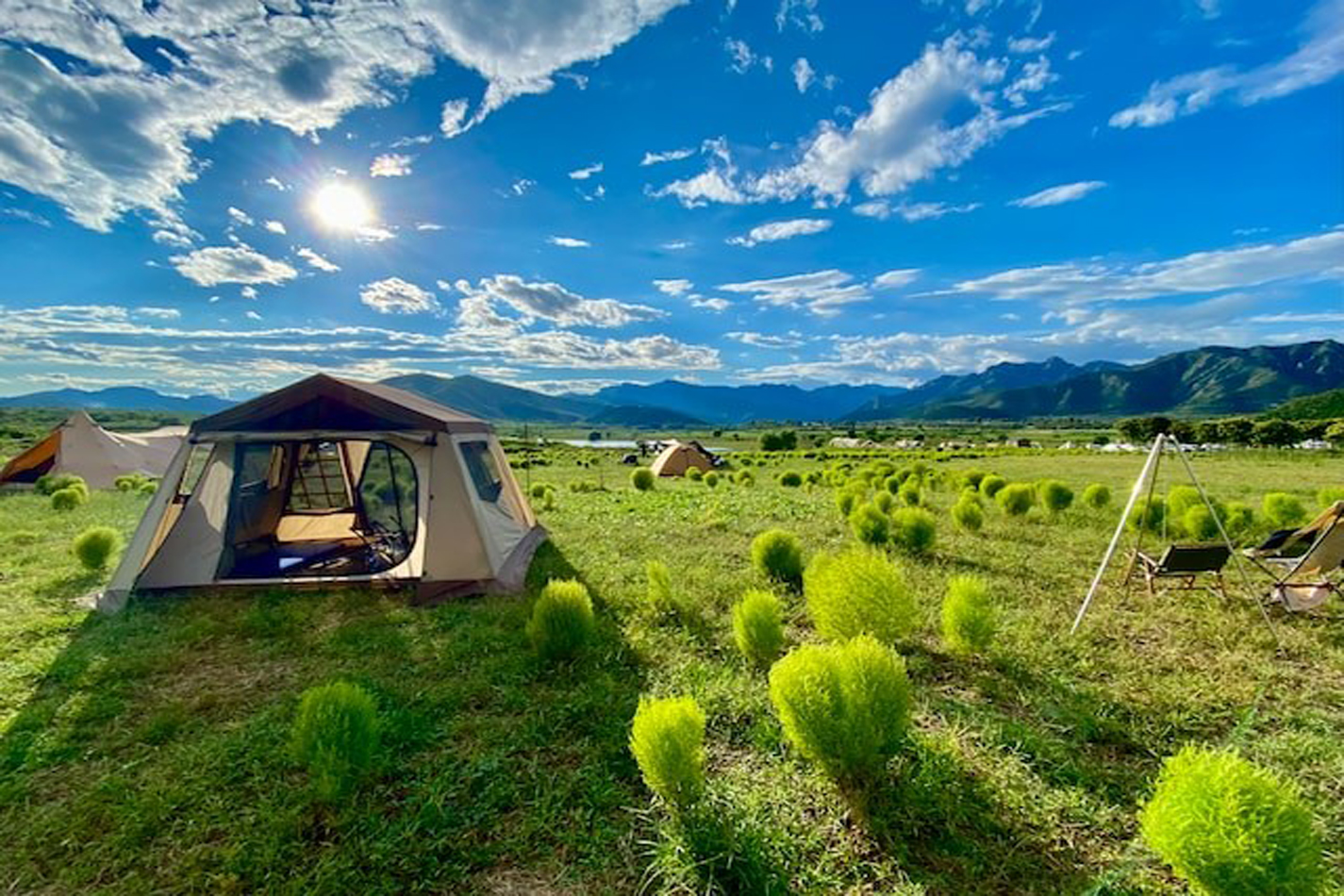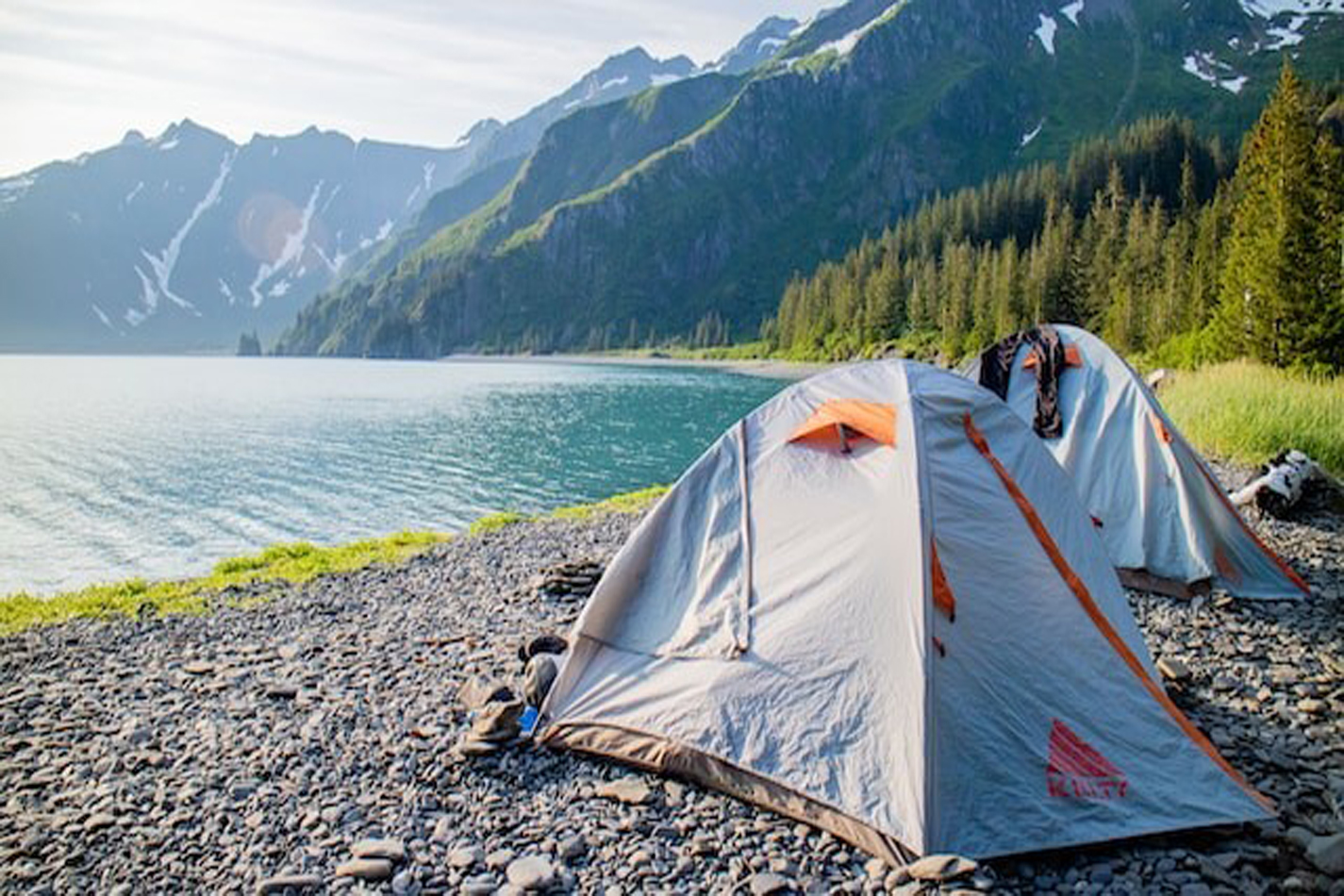Introduction
In this article, we'll delve into a common camping woe – condensation in tent during camping and what can we do to reduce condensation in a tent during camping. If you've ever wondered about those mysterious puddles or droplets in your tent, you're in the right place. Let's unravel the science behind condensation and explore practical strategies how to reduce condensation to keep it from dampening your camping spirit.

What is Condensation?
Condensation occurs when a substance transitions from a gas to a liquid state. In the case of camping, it's water vapor in the air turning into water droplets on surfaces. Before jumping into how to minimize condensation in a tent during camping, it’s equally important to understand the role of water vapor and the factors influencing its presence.
The Science Behind Condensation
Water vapor, present in the air, condenses when warm air meets a cold surface. Think of a cold glass of lemonade on a hot day – the water droplets on the outside aren't leaks; it's condensation in action. Condensation in a tent occurs when warm, moist air inside the tent comes into contact with a cooler surface, such as the tent walls or rainfly, and then the air's moisture condenses into water droplets. This can be a common issue during camping, especially in colder or humid conditions.
Factors Affecting Water Vapor in the Air
The amount of water vapor varies with location, creating distinctions between dry and humid climates. Considering there are 357 followed by 14 zeros gallons of water in the Earth's air, camping can sometimes feel like you're surrounded by all that moisture.
Why Does Condensation Happen During Camping?
Temperature Difference
Condensation is more likely to occur when there is a significant temperature difference between the inside and outside of the tent. The warm air inside the tent can't hold as much moisture as cooler air, leading to condensation on colder surfaces.
Camping Structures and Insulation Challenges
Tents and many RVs lack the insulation found in homes, making their interior surfaces cooler. When warm air inside meets these cooler surfaces, condensation is inevitable. Group camping exacerbates the issue, cramming warm bodies into a confined space.
Humidity
High humidity levels contribute to condensation. When the air inside the tent is saturated with moisture, it's more likely to condense on cool surfaces.
Poor Ventilation
Insufficient airflow within the tent can trap moisture inside. Without proper ventilation, the humid air has nowhere to go, increasing the likelihood of condensation.
The Consequences of Condensation
Condensation isn't just a nuisance; it poses real challenges. From damp gear to the struggle to stay warm, managing condensation becomes integral to a positive camping experience.
Condensation can saturate gear, clothing, and sleeping bags, rendering them damp. Waking up to a wet tent interior can be uncomfortable and affect the overall enjoyment of the camping experience. Persistent condensation can create a conducive environment for mold and mildew.
Continual exposure to moisture can accelerate the wear and tear of camping equipment. Persistent condensation makes it challenging to dry gear during the camping trip. Wet gear, when not properly dried, becomes a breeding ground for bacteria and unpleasant odors.
Wet gear and clothing add extra weight to your backpack. In colder conditions, condensation can contribute to a drop in temperature inside the tent.
Understanding these consequences emphasizes the importance of addressing condensation issues proactively.
How to Manage Condensation: Strategies for Campers?
Ventilation is Key
The most effective way to combat condensation is to increase ventilation. Opening doors and vents might sacrifice a bit of warmth, but staying dry is paramount.
Keep tent doors and windows partially open to allow a continuous exchange of air. Opt for tents with built-in ventilation features, such as mesh windows or roof vents.
Modern three-season and four-season tents include vestibules for storing gear outside the tent. However, when fully zipped, vestibules can trap moisture, leading to potential condensation inside. To prevent this, unzip and roll back the vestibules at night for improved airflow and reduced moisture buildup in the tent.
Take advantage of times when condensation is more likely, such as early morning. Open up the tent during these periods to release accumulated moisture.
If your tent has specific ventilation flaps or panels, use them strategically to optimize airflow. Adjust them based on the prevailing wind direction. One effective method is to refrain from using the rainfly when there is no rainfall. The rainfly, while crucial for protection during wet conditions, can impede ventilation in dry weather. By leaving the rainfly off, campers allow unrestricted air circulation inside the tent.
If purchasing a new tent, opt for lightweight, breathable materials that facilitate better air exchange, reducing the likelihood of condensation.
Drying Wet Clothing Outside
Wet clothing outside your tent dries without adding excess water vapor inside. It's a simple yet effective strategy to minimize condensation. When wet clothing is left inside the tent, the moisture from the fabric evaporates into the air, contributing to increased humidity within the confined space. This rise in humidity can lead to condensation on the tent walls and ceiling, creating an uncomfortable and damp environment.
Avoiding Contact with Tent Walls
Touching tent walls disrupts surface tension, causing water droplets to flow and potentially create puddles. Maintain a dry space by avoiding unnecessary contact.
Limiting Cooking Inside
When you cook inside the tent, especially with methods like boiling or steaming, it produces water vapor (moisture) in the air. In a confined space like a tent, this moisture has nowhere to escape, increasing the humidity inside. Especially in cool or cold conditions, the warm air inside the tent, combined with the moisture from cooking, can lead to condensation. Therefore, it is highly recommended to minimize indoor cooking to reduce the moisture in the air.
Caution with Heaters
Heaters, while providing warmth, can increase condensation. Understand the relationship between warm air, water vapor, and cold surfaces to make informed decisions.
Heaters become a desirable amenity as temperatures dip, however, it's important to note that heaters can also be a source of condensation as they introduce moisture into the air.
In practical terms, this means that if you use a heater in a space, especially during colder weather, you may notice an increase in condensation on windows or other cold surfaces within that area. It's important to understand this relationship between warm air, water vapor, and cold surfaces so that you can make informed decisions about how to manage indoor conditions.
To mitigate the potential issues related to condensation when using heaters, you might consider improving ventilation in the space, using dehumidifiers, or ensuring proper insulation to reduce temperature variations between indoor and outdoor surfaces. Being aware of these dynamics allows you to take measures to maintain a comfortable and moisture-controlled environment.
Utilizing Natural Breezes
Pitch your tent where there's a slight breeze. External air movement helps to expel indoor air faster, reducing condensation. The movement of external air helps carry away the moist air inside the tent more effectively. This constant exchange of air reduces the likelihood of condensation buildup by preventing the warm, moisture-laden air from lingering inside the tent.
Campsite Selection Matters
Campsite selection plays a crucial role in managing condensation. Set up camp away from water sources and on dry ground to minimize atmospheric moisture, giving condensation less chance to occur. Elevation and Topography: Selecting a campsite at a higher elevation can be advantageous because cold air tends to settle in lower areas. By camping at a higher elevation, you may avoid the cooler air that can lead to more significant condensation. Elevated locations often benefit from a gentle breeze, contributing to improved ventilation. Choosing to camp on higher ground not only provides better airflow but also mitigates the risk of waking up in a puddle in case of overnight rain. Avoiding Low-Lying Areas: Low-lying areas, such as valleys or depressions, are prone to temperature inversions, where cold air becomes trapped close to the ground. Camping in such areas may increase the likelihood of condensation due to the stagnant air. Proximity to Water Sources: Camping too close to bodies of water, such as lakes or rivers, can contribute to higher humidity levels and increased condensation. Select a campsite at a reasonable distance from water sources to mitigate this. Ventilation: Choosing a campsite with good natural ventilation, such as being near a gentle breeze, allows for the exchange of air between the inside and outside of the tent. Camp Under Trees: camping under trees is recommended to take advantage of the slightly warmer air, which can reduce condensation inside the tent. Additionally, the presence of trees can influence the distribution of water vapor, potentially diverting condensation to the tree surfaces instead of your tent. This advice is particularly useful for managing moisture and enhancing the overall comfort of your camping experience. The Importance of Avoiding Wet Ground: Camping on wet ground increases the likelihood of condensation in the tent. Moisture from the ground can seep into the tent, adding to the overall humidity. To prevent condensation, choose a dry campsite, preferably on elevated ground, and use a ground tarp to create a barrier between the tent floor and damp soil. This helps maintain a dry interior and minimizes the risk of condensation during your camping experience.
Towels as Morning Saviors
Carry spare towels to wipe down tent walls in the morning. This proactive approach aids in drying and prevents prolonged dampness.
Embracing Battery-Powered Fans
Even a small fan can enhance ventilation efforts. Keeping the air inside your tent or RV in motion amplifies the effectiveness of other condensation-reducing strategies.
The Role of Dehumidifiers
Consider using dehumidifiers designed for tents and RVs, especially in humid climates. They can significantly reduce excess moisture in the air. Dehumidifiers help prevent condensation on surfaces within tents or RVs. Beyond moisture control, dehumidifiers contribute to overall comfort by creating a drier environment. This can be especially beneficial in preventing that clammy feeling often associated with high humidity. Dehumidifiers play a key role in inhibiting the growth of mold and mildew.
Some dehumidifiers are designed with energy-efficient features, allowing them to operate effectively without consuming excessive power. Dehumidifiers are versatile and can be used in various environments beyond camping, such as in homes, basements, or storage spaces.
Strategic Campsite Placement
Avoid low spots, depressions, or valleys where heavier water vapor settles. Opt for higher, well-ventilated areas for your campsite.
Investing in Double-Walled Tents
Certain tents excel more than others in environments with high condensation. Prior to your trip, take into account the climate of your camping destination. Tents are available in single and double-wall designs, with double-wall tents generally performing better in high-condensation settings.
Investing in double-walled tents is a smart choice to address condensation issues during camping. These tents have an inner layer with breathable mesh and an outer rainfly for added moisture protection. The separation between layers promotes better ventilation, reducing condensation risk, especially in high humidity or variable temperature environments. Double-walled tents also provide enhanced insulation, making them suitable for various weather conditions and improving overall camping comfort.
A double-walled tent, rain fly, or tarp creates a buffer zone where condensation builds up outside. Proper setup is crucial to avoid leaks.
Reducing Occupancy to Prevent Condensation in Tent
On average, an individual can release approximately 500 milliliters to 1 liter (about 17 to 34 fluid ounces) of moisture through breath and perspiration while sleeping. limiting the number of individuals inside a tent is an effective strategy to reduce condensation. Each person emits moisture through breath and perspiration, contributing to elevated humidity levels within the tent. This increase in moisture content raises the likelihood of condensation formation. By minimizing occupancy, the overall moisture in the enclosed space decreases, fostering improved ventilation and lowering the risk of condensation.
Camping Smarter by Avoiding Rainy Weather and Humid Conditions
Controlling the weather can be challenging, but by diligently monitoring weather forecasts before your camping trip, you gain the advantage of selecting dry days for your excursion. Opt for periods with lower probabilities of rain and reduced humidity. Choosing to camp during drier seasons helps minimize the risk of encountering rain and high humidity.
Pick a camping site in a region known for drier climates. Important thing to note is that it’s the humidity and rain causing condensation in tent.
Why Keeping Your Dog Outside Helps Prevent Condensation?
Keeping your dog outside the tent is advisable to minimize condensation. Pets release moisture through breath and body heat, contributing to elevated humidity levels inside the tent. This added moisture increases the risk of condensation formation. By excluding your dog, you reduce the overall humidity, promoting better ventilation and helping prevent condensation buildup during camping.
Ground Tarp Usage
Even with a waterproof tent floor, nighttime moisture infiltration is possible from wet ground or puddles, leading to potential condensation on the ceiling.
Lay a ground tarp or footprint under your tent to create a barrier between the tent floor and damp ground, preventing ground moisture from seeping in.
Strategic Sleeping Placement to Prevent Tent Condensation
Position your sleeping area near a tent window or door to facilitate better ventilation and reduce the likelihood of condensation inside. This arrangement allows the moisture from your breath, which naturally occurs during sleep, to exit the tent more easily.
This simple adjustment helps maintain a drier environment inside your tent, enhancing comfort and minimizing condensation issues.
Expensive Alternatives for Battling Condensation
High-Tech Tents
Some tents boast waterproof yet breathable fabrics, providing advanced condensation management. However, these can be costly, ranging from $1,500 to $3,500.
Indirect Heating Solutions
Heaters placed outside the tent, pumping warm air in, offer an indirect approach. These solutions can also be expensive, sometimes exceeding a couple of thousand dollars.
Places Where Condensation Poses an Issue
Condensation does not present challenges in every climate; specific weather conditions must align for it to become a concern. Most importantly, you don’t have to be worried about condensation if you are camping in somewhere in desert are or arid regions like dry mountainous areas is less likely to result in condensation issues, as these locations typically maintain low humidity levels due to minimal moisture in the air.
On the contrary, regions with frequent rainfall, tropical climates, proximity to bodies of water, low-lying areas like valleys, and marshy terrains are characterized for higher humidity levels that poses greater risk of condensation-related problems.
Additionally, condensation becomes more pronounced in cold climates, where the significant temperature difference between the exterior and interior of a tent can lead to frost formation when the weather drops below freezing.
Camping in the Rain: How to Deal with Condensation
Camping in the rain increases the risk of condensation inside your tent. Rainy conditions create higher humidity levels, and when the warm air inside the tent comes into contact with the cooler tent surfaces, it can lead to condensation. This moisture buildup can make the interior damp, affecting your gear and overall comfort.
Optimal tent setup involves tightly pitching the tent. For double-wall tents, extend the rainfly away from the inner tent to maximize airflow, reducing the chance of condensation dripping inside. Stake the rainfly separately for better ventilation. For single-wall tents, taut pitching aids in keeping vents open, enhancing overall airflow.
If condensation forms and get worse, use a cloth to wipe down wet surfaces inside the tent to maintain a drier environment.
No Elimination, Only Management
Condensation cannot be eliminated entirely, but armed with these strategies, you can make informed choices to manage it effectively. Real-world camping involves compromises, but by understanding condensation dynamics, you can minimize its impact on your camping experience.
Conclusion
Condensation is a challenge, but it doesn't have to ruin your camping trip. With proactive measures and informed decision-making, you can enjoy a dry and comfortable adventure. If you found value in this video, hit the like button, subscribe to Let's Go Now Adventures, and stay tuned for more camping-related insights.
FAQs
Can condensation be entirely avoided during camping? Unfortunately, no. However, effective management strategies can significantly reduce its impact. Is using a heater inside the tent always a bad idea? Not necessarily. Understanding how heaters contribute to condensation helps in making informed choices. What's the significance of camping away from water sources? Bodies of water contribute to higher atmospheric moisture, increasing the likelihood of condensation. Are dehumidifiers necessary for all camping trips? It depends on the climate. In humid conditions, dehumidifiers can be beneficial, but in drier climates, they may not be essential. How do double-walled tents work to combat condensation? The double wall creates a buffer zone, allowing for better ventilation without sacrificing insulation.


